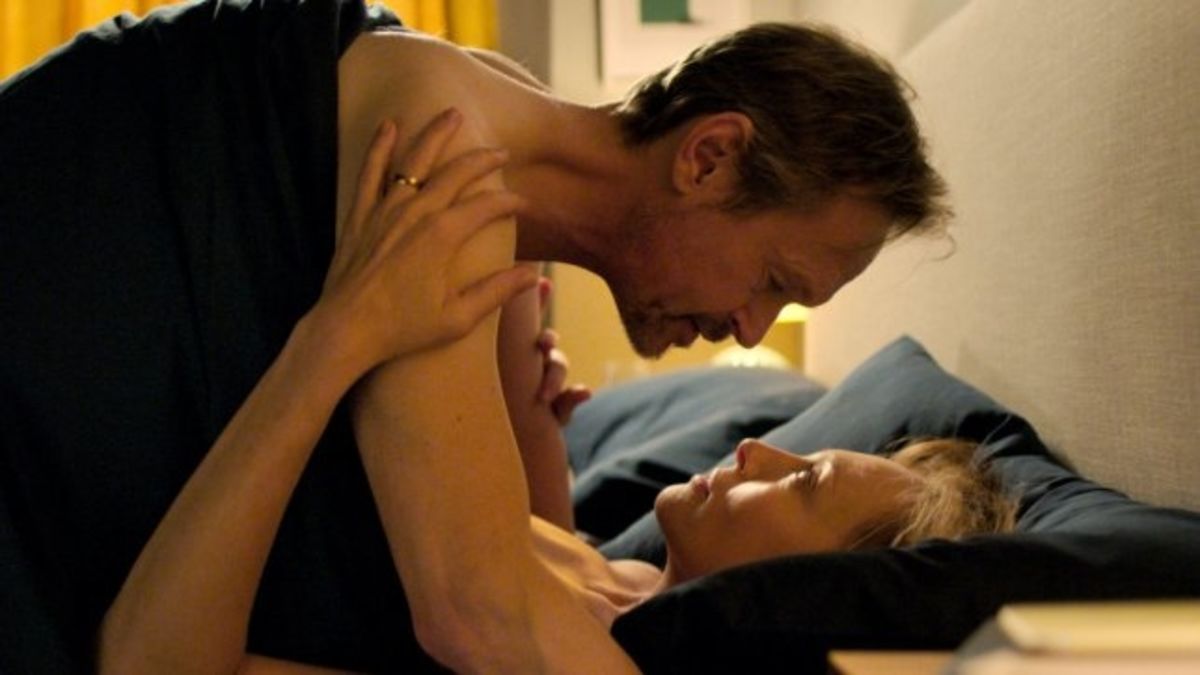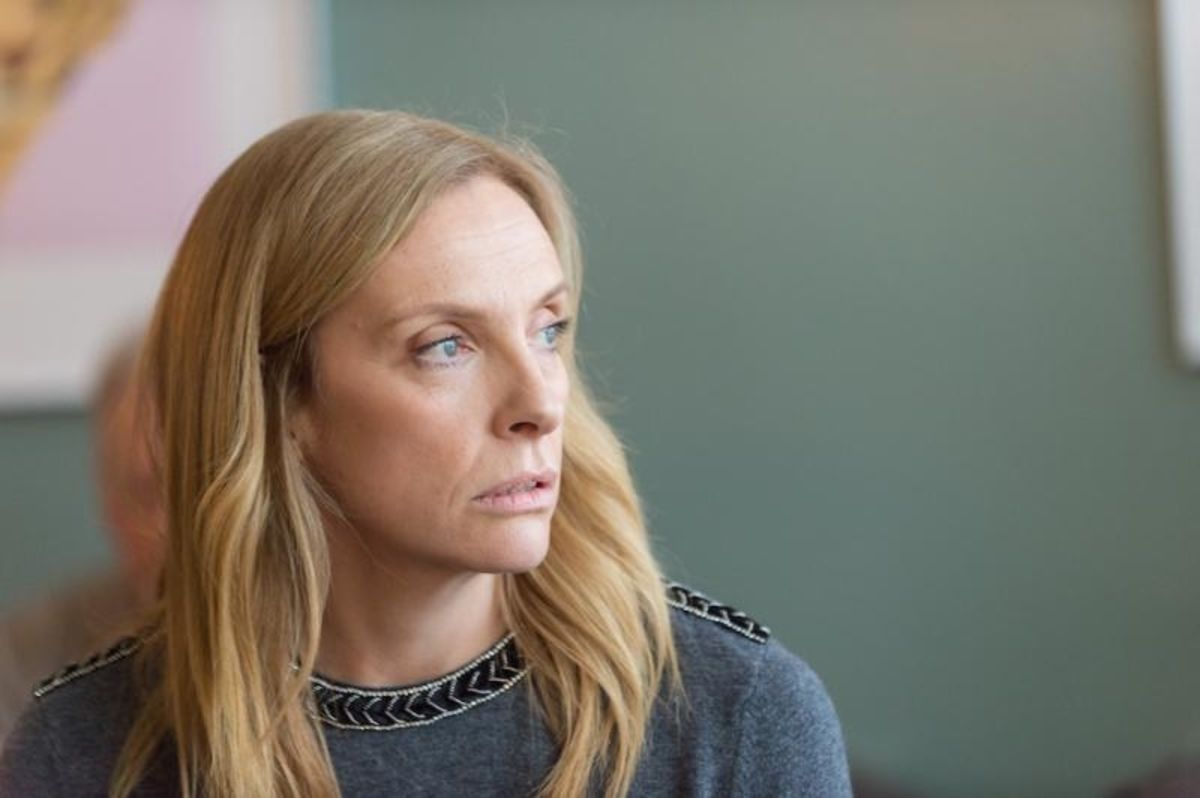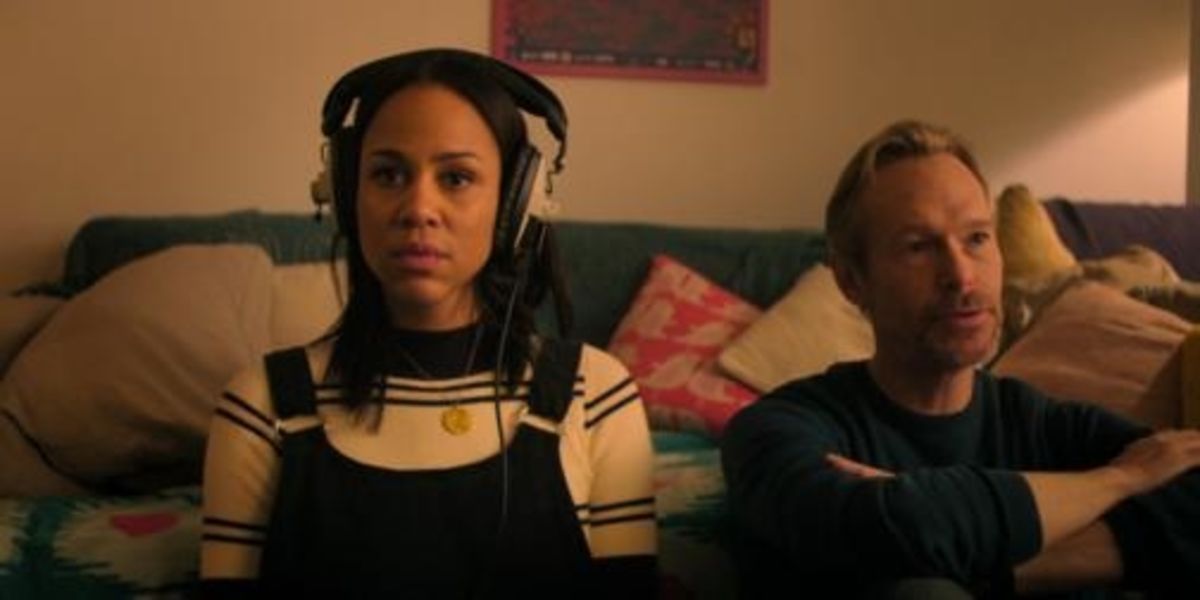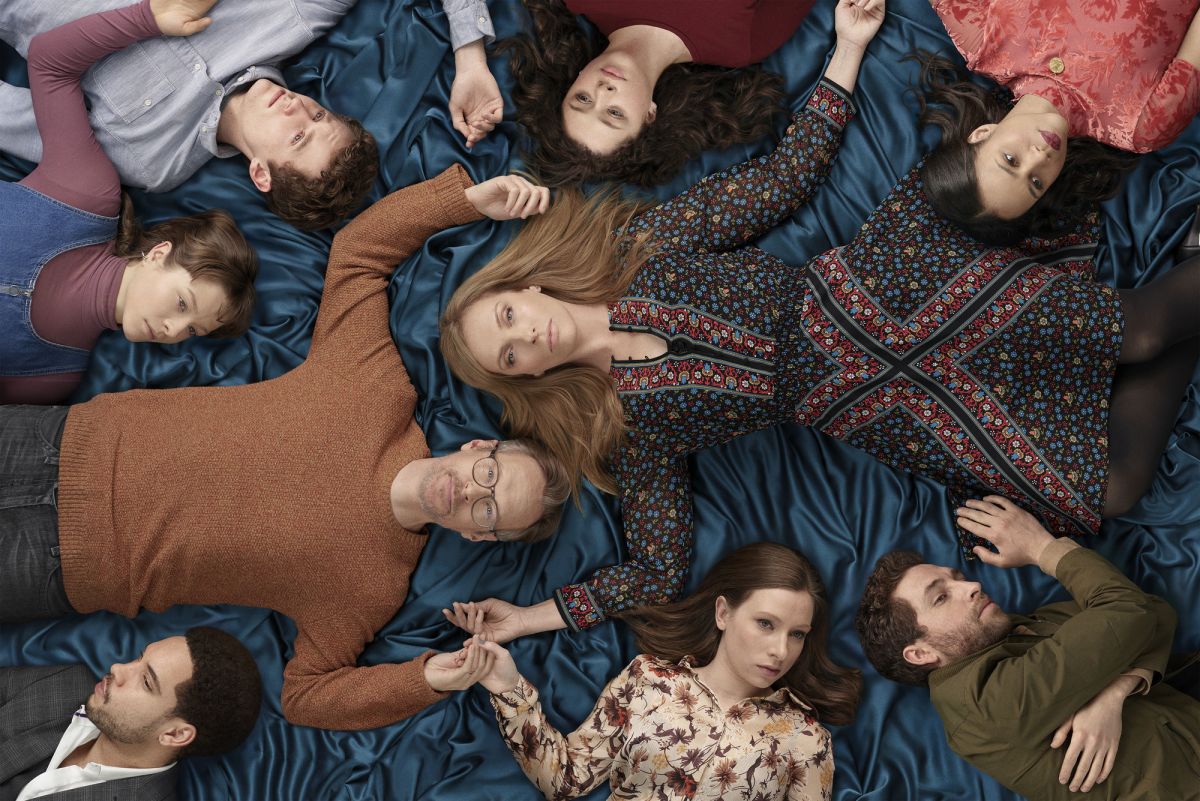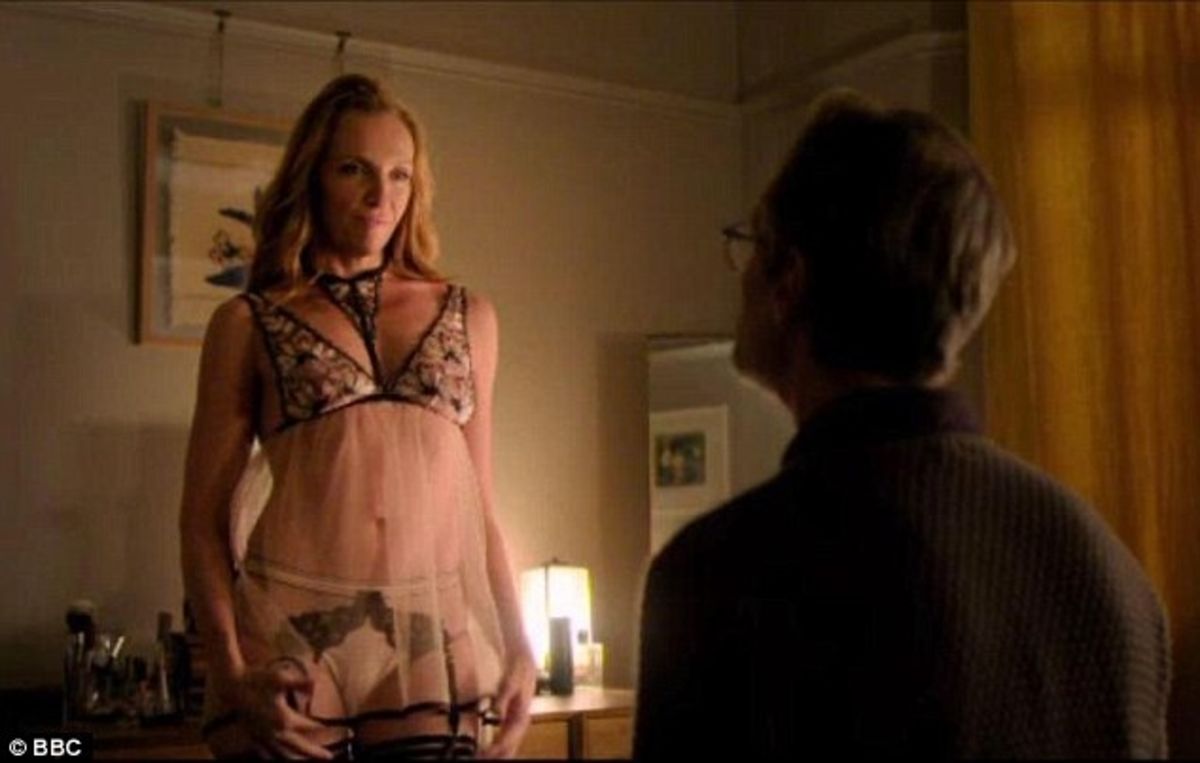
Wanderlust: Season One
A brilliant exploration of possibility, and the fallout that arises from wanting.
Wanderlust the television series (not the movie) is a beautiful example of what happens when you set out to tell a complete story. Spanning six episodes and supported by a fantastic performance from Toni Collette, this BBC series (now on Netflix) makes an argument for acceptance: acceptance of past mistakes and acceptance of one’s current situation.
Just know that in doing so, you might be setting yourself up for an even greater personal failure.
Flirting with Disaster
Joy and Alan (Collette and Steven Mackintosh) are married with adult children. Like many couples in this situation, routine rules the day and a state of unrest kicks into place. Unlike many couples, the two conceive of engaging in an open relationship to somehow rekindle the romance and fill the emptiness they sense between them.
Joy wants excitement. Alan is resolved with the way things are between them. He doesn’t see the point in making a big deal out of anything. Advances made towards each other are met with equal parts rejection, and the two drift apart.
Granting each other permission to hook up with other people, Joy and Alan set out to redefine what it means to be married.
Their enthusiasm for the good in an open relationship runs up against judgment from the outside. Joy’s first date disapproves and finds it “disgusting.” The school administrator finds it equally distasteful. Even their youngest son Tom (Joe Hurst) finds fault with their dalliances—unsure what love really means if mom and dad are shagging other people.
Joy and Alan try to explain—try to get the rest of the world to see things in a different light. But they are only met with greater and greater resistance. Many do not understand why the two of them would do something like that—why they would risk endangering their marriage?
Judging someone from the outside is easy. Unusual behavior comes across deviant or antisocial because you don’t understand their deep-seated motivations.
A complete story fixes all that.
Repression And Regression
Joy’s initial rejection of Alan seems to find a cause in the recovery from her bike accident. Flashes of scenes from that fateful intersection accompany her withdrawal leading us to believe she just needs more time.
Those flashes, however, start to reveal an even deeper source of conflict for her:
A former patient of hers reached out to her just before committing suicide.
Joy, not wanting to be bothered by him at the moment, ignored the call. This “mistake”—from her point-of-view—multiplied by an incident with her father years prior, set the stage for her justification for repression.
The foundation for this process in Joy saw its genesis with her mother’s funeral. Moments before attending the memorial, Joy’s father told her “not to make a fuss”—to permanently repress those feelings of grief and loss she felt for her mother.
Not wanting to upset her father, Joy did as asked, but found she needed some sort of outlet—some way to release those emotions. Instead of turning to Alan, who she had just started dating, Joy hooked up with former boyfriend Lawrence—preferring the physical, sexual release over an emotional one that could end up in her “making a fuss.”
Of course, Joy kept that hidden. She buried it so far down below that she couldn’t even see the cause for her emotional distress anymore.
Joy buried it to the point where she needed a therapist—and a story—to bring it all back up to the surface.
Building a Main Character
This point of personal blindness, where the Main Character cannot see the source of their own justifications, is where a story finds its starting position. That process of justification leading up the beginning is what many Authors refer to as Backstory. A complete story follows the Main Character as she unravels the rationale for her behavior. Brick by brick and Act by Act, that wall of justification comes down, eventually revealing the initial source of conflict.
This moment of in-depth personal exposure is the “Leap of Faith” moment for the Main Character. Once the source of this justification is known, the Main Character is faced with two options: take up that justification process again—or change and adopt a new way of approaching the same problem.
Joy chooses the latter—but it takes some time and some experimentation getting there.
Rediscovering You
That time spent proves to be just what Joy and Alan needed to spice things up in their marriage. The two return home from their first extra-marital affair and quickly jump on top of each other. Learning what happened during the other’s encounter ignites a heated process of rediscovering their love for one another.
The only difficulty? Making allowances for each other's feelings—and the feelings that develop within third parties. To Joy and Alan, the experience starts out as a bit of fun. As things progress, Alan’s partner Claire (Zawe Ashton) develops feelings for him, and things start to get messy.
They get even messier when Alan discovers he feels something for Claire as well.
Discovering Us
Discovery sits at the heart of all the relationships in Wanderlust. Tom discovers his best friend Michelle is more than a best friend, while Tom and Jennifer discover they’re probably better off as friends. Joy’s patient Jason (Royce Pierreson) and her daughter Larua (Celeste Doing) learn they’re perfect for each other. Their neighbor Rita (Anastasia Hille) discovers her newfound sexuality with Joy and Alan’s other daughter, Naomi (Emma D'Arcy).
Alan and Claire work things out, while Joy strikes up a relationship of discovery with her old flame Lawrence (Paul Kaye).
Motivating each one of these relationships is the sense of possibility. The risk that this could end in disaster pales in comparison to the chance that this could all play out in triumph.
Wanderlust is about relationships—and specifically, dysfunctional relationships. Whether motivated by a sense of loss or grief or just because there is a feeling that something is missing, these characters find inspiration in each other—a chance worth taking.
And for most, the risk was worth it.
Tom and Michelle, while getting off to a slow start, will likely develop into an even stronger relationship. Same with Rita and Naomi.
Even Joy and Alan’s respected beaus, Claire and Mark look likely to find comfort in each other at the end.
But when it comes to Jason and Celeste—the future is unclear. Yes, they’re setting out on a trip together, but Jason still can’t let go of his deceased wife. Jason and Celeste’s likelihood of success is a dwindling and lingering one.
And the same can be said for Joy and Alan’s grand experiment.
Coming Home
In the end, Joy returns home to find Alan content and waiting like always, their reinvented relationship secure, and their experiment a success.
Yet, Joy is still not joyful.
That final breath of angst she releases just before the end credits proves that—while this kind of relationship might be suitable for some and better for their marriage itself—it can wreak havoc on the individual.
Joy ends things with Lawrence, not because she wants to, but rather because she realizes they probably aren’t going to make it. And she’s able to make this decision because the story helped her tear down those justifications.
Joy's therapist helped her uncover that deep-seated source of emotional angst—that possibility that she was responsible for her patient’s suicide—and opened up Joy to the possibility of probability.
Instead of being motivated by possibility, Joy now sees the likelihood of things. That’s why she can so easily break it off with Lawrence—
—and why she hesitates in those final frames.
She knows where her relationship with Akan will likely end up.
In Wanderlust Joy chooses the path of change. Repression and the repulsion of her own feelings is no longer an option for her. The second season may very well find her beginning a new process of justification—but it will be centered around an entirely different issue.
Understanding the Storypoints of the Storyform
The dysfunctional psychologies in play within Wanderlust set the stage for an Objective Story Domain of Psychology. Finding inspiration within each other and determining whether or not they should continue their relationships locks in the Objective Story Concern of Conceiving.
Overall, the first season focuses on an Objective Story Issue of Deficiency—each and every relationship is out-of-balance because of this sense that something is missing, or lacking. The very notion that the other suggests a possibility of something better motivates conflict and sets the Objective Story Problem of Possibility.
Joy, too, finds her personal throughline motivated by Possibility—the possibility that she could have done something to save her patient. This Main Character Problem of Possibility blossoms up through a Main Character Issue of Repulsion (push out those bad feelings, don't cry) and funnels out into a Main Character Domain of Universe. Conflict in the area of Universe describes a character out of sorts with her environment, inequity bred from the physicality of things. Joy's accident and subsequent hospitalization give meaning to this underlying psychological problem for hers.
Sharing the same problematic Element with a Psychology Objective Story means Joy will end the story with a Main Character Resolve of Changed and a Main Character Growth of Start. This is a coming-of-age story for a middle-aged woman. Once she realizes that she and Lawrence will most likely fizzle out, she arcs out of Possibility and into a Main Character Solution of Probability.
But all is not well.
Wanderlust is a story of Personal Tragedy. While the majority of characters within the story find relative amounts of lingering success, Joy ends the story distraught and unsettled. She has grown—but only greater in her own personal sense of inequity. These two endings indicate a Story Outcome of Success and a Story Judgment of Bad.
Looking at the other two Throughlines to balance out the narrative, the Obstacle Character, and Relationship Story Throughlines, we find Alan set in an Obstacle Character Domain of Mind and their marriage in a Relationship Story Domain of Physics.
Alan's impact in the area of Mind is clear: he seems unfazed by emotional considerations and determined to make things right with Joy. Their extra-marital romps with others and their difficulties with intimacy between them fit effortlessly into a definition of Physical conflict.
Being forced to deal with the realities that their playthings are actual people with actual feelings answers the narrative's requirement for a Relationship Story Issue of Preconditions.
Wanderlust is a brilliant example of a single story told across the span of six episodes. While leaving one feeling unsettled at the end, the meaning behind the narrative is clear: While tragic to the individual, you can start to get an idea of what you want by beginning to recognize what is most unlikely to happen.
Download the FREE e-book Never Trust a Hero
Don't miss out on the latest in narrative theory and storytelling with artificial intelligence. Subscribe to the Narrative First newsletter below and receive a link to download the 20-page e-book, Never Trust a Hero.


